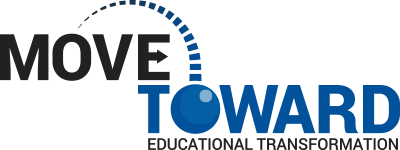Integrating Thinking Routines to Promote Cognitive Rigor
Children must be taught how to think, not what to think." - Margaret Mead
Design For Cognition
Routines are prevalent in the classroom and for good reason. They set up an environment that is predictable and safe for students. Management routines maintain order. Instructional routines are how things are done in learning.
To take it a step further, Ron Ritchard and the Visible Thinking crew from Harvard have spent years researching classroom thinking routines and have documented their use in both Making Thinking Visible and The Power of Making Thinking Visible. Both books have extensive examples of how teachers use Thinking Routines. The Project Zero Website has over 90 routines to implement into your class. To use Thinking Routines effectively, consider choosing one to integrate with what you are already doing and use it consistently.
So, I offer a short introduction to Thinking Routines to consider integrating them into your curriculum.
WHAT?
“Thinking Routines loosely guide learners' thought processes. They are short, easy-to-learn mini-strategies that extend and deepen students' thinking and become part of the fabric of everyday classroom life. Thinking routines exist in all classrooms.”
They are flexible, simple structures that help students make the complex accessible and sustain curiosity.
WHY?
Thinking Routines are intended to teach thinking skills and help students get in the habit of:
Being close observers
Organizing ideas
Reasoning carefully
Reflecting how students are making sense of things for themselves
Students do this by:
Asking deep questions
Making connections
Coming up with explanations
Challenging those explanations
Seeing other perspectives
HOW?
Introduce one thinking routine with scaffolding. Allow students to get used to it in multiple contexts. You may even incorporate one as a team. There are over 90 thinking routines presented on Project Zero’s site. The options below are some of the core routines.
|
Name and Link |
Purpose |
Scaffold |
When to Use |
|
This routine encourages students to make careful observations and thoughtful interpretations. |
Ask why they think and wonder as they do |
Beginning of a unit to connect to topic or to apply prior knowledge and ideas |
|
|
This routine helps students describe what they see or know and asks them to build explanations. |
Ask follow-up questions to clarify interpretation |
To explore a topic in full or small group discussion or in an individual response to a reading |
|
|
This routine encourages the process of reasoning by asking students to form an interpretation of something and support it with evidence. |
Model routine. Ask follow-up questions to clarify ideas. Allow for dissenting ideas. |
Any topics that invite explanations or are open to interpretation. Great for argument building. |
|
|
This routine helps students to reflect on their thinking about a topic or issue and explore how and why that thinking has changed. |
Explore the changes to understand how that change has happened |
This is used after new information is explored, typically after a reading or end of a unit. |
|
|
The routine helps learners to identify individuals with various perspectives in a given situation |
Provide enough information about other perspectives. A safe environment is necessary if used as a full class. |
This more complicated routine should be used when the goal is examining social perspectives whether in a news article or a historical event or another perspective |

